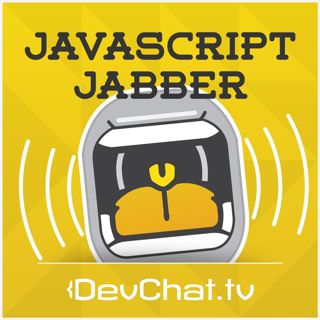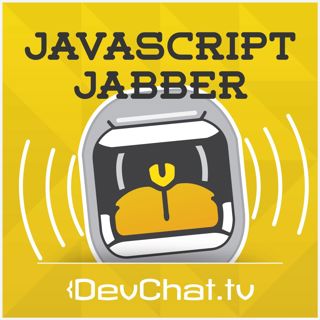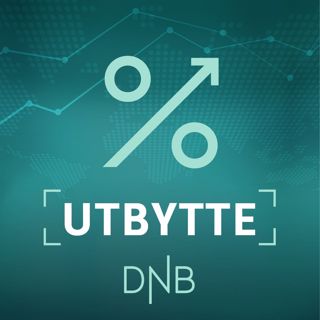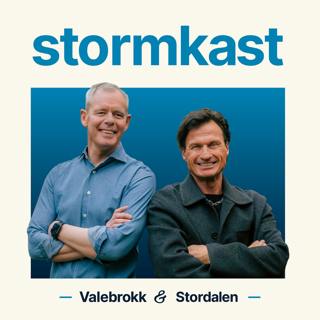
JSJ 410: Iterating on Open Source
Today the panel is discussing iterating on open source projects. Aimee and AJ recall a conversation they had in the past on this subject and AJ talks about some of his experience iterating with open source. AJ believes that we have an obligation to capture the value of what you create so that we can reinvest and create more value, though he admits that making money in open source is a unique challenge because donations only really work if you have a project that gets billions of downloads a month. As your project grows, it has to change in order to survive, and eventually you will need to get financial support from your project. The panel agrees that some of the main issues with iterating in open source are maintaining the code and getting feedback from users, financial backing, and roadmapping and integrations.The panel discusses their methods for getting feedback from their users. This feedback is valuable because it can show you things that you missed. They acknowledge that there can be conflicts of interest between those who only use the project and those who financially support it, and you have to make a choice. Unfortunately, someone is probably going to be inconvenienced no matter what choice you make. When making these decisions, you have to consider who it helps, who it frustrates, and who it may cause problems for. The panelists talk about different ways they’ve handled making these decisions in the past. The JavaScript experts talk about the importance of having data on your user base in order to make good choices for your users. They talk about different methods for notifying your users of upcoming changes and how it will affect compatibility, and some of the challenges with communicating with your users. AJ talks about an iteration he thought was a good idea but that a lot of people hated and how he noticed that the new users liked it but the old users did not. They panel agrees that people in general don’t like change. AJ talks about what he learned from this experience. Another common issue is integrating with other services. Integrating with cloud services, or at least giving people the option to integrate gives you an opportunity to reach more people and maintain the project long term. AJ gives some final thoughts to close the show, namely that most projects never go anywhere, and that’s ok. If you’ve got something that starts going somewhere, think early on about how you can better serve the community and remember that these people are mostly grateful and semi-willing to support you. He believes that if you are helping people create value, you deserve to see the fruits of your labor. He advises listeners to stay true to your open source ideals, think about your users perspective, and that the earlier you can think about this and make these choices, the better it is for your project PanelistsAimee KnightSteve EdwardsAJ O’NealCharles Max Wood**To receive your 40% OFF coupon for Manning Publications (good for all our products in all formats) visit us on Facebook - click on "Send A Message"and type "YES"**SponsorsSentry | Use the code “devchat” for $100 credit LinksHow-npm-am-iReactVue.jsLet’s EncryptAsync/awaitNodePicksAimee Knight:Debug Like a NinjaSteve Edwards:Jack Ryan AJ O’Neal:Why I, as a black man, attend KKK meetingsCharles Max Wood:It’s a Wonderful LifeMr. Kreuger’s ChristmasSupport this podcast at — https://redcircle.com/javascript-jabber/donationsPrivacy & Opt-Out: https://redcircle.com/privacyBecome a supporter of this podcast: https://www.spreaker.com/podcast/javascript-jabber--6102064/support.
3 Des 201959min

JSJ 409: Swagger and Open API with Josh Ponelat
Today the panel discusses the difference between Swagger and Open API with Josh Ponelat. Josh details the difference between the two. Swagger is a set of protocols around describing restful APIs. Swagger was taken over by a company called SmartBear, who donated the donated the specification to the Open Linux Foundation, and that became the Open API. Swagger is the tooling surrounding these specifications. Open API is a standardized way to describe a restful API in a YAML file. Once you’ve got a YAML file to describe your API, you can use tooling like Swagger to leverage that and take it to the next level. Using the Open API process is useful for situations where you already have an API in place, but want to codify and document it so that it’s controlled. Then going forward, you won’t introduce contradictions and it remains consistent because it’s documented in a YAML file. The process leaves room for enhancement in the future as well. Josh talks about some of the benefits of standardizing your API and some of the use cases besides tooling. A standardized API can help show developers how to use your API, SDKs, and service stubs by knowing your API is consistent in style. This makes it easier to find breaking changes and more. Josh talks more about Swagger, a finite set of tooling around Open API, most of which are open source. He talks about other tools that test APIs and do linting on YAML files. Some of the companies that use Open API include Google, Amazon, and Microsoft. Josh talks about how Amazon implements Open API.Josh talks about the book he’s writing, Designing APIs with Swagger and Open API. The book goes over describing APIs today, how to design APIs without writing code first, and how to get the most out of the system. The show concludes with Josh talking about the power of consistency and writing things down on paper. He discusses where implications that the standardization of APIs has on the text industry. PanelistsDan ShapirCharles Max WoodGuestJosh Ponelat**To receive your the 40% OFF coupon for Manning Publications (good for all our products in all formats) visit us at Facebook - click on "Send A Message"and type "YES"**SponsorsSentry | Use the code “devchat” for $100 credit LinksSwaggerOpen APIDifference Between Swagger and Open APIGraphQLDesigning APIs with Swagger and Open APIPicksDan ShapirSaga of Pliocene ExileCharles Max WoodDevChat.tv Merchandise BusyCalJosh PonelatAsciiDocFASD toolSpecial Guest: Josh Ponelat. Support this podcast at — https://redcircle.com/javascript-jabber/donationsPrivacy & Opt-Out: https://redcircle.com/privacyBecome a supporter of this podcast: https://www.spreaker.com/podcast/javascript-jabber--6102064/support.
26 Nov 201946min

The MaxCoders Guide To Finding Your Dream Developer Job
"The MaxCoders Guide to Finding Your Dream Developer Job" by Charles Max Wood is available on Amazon. Get your copy here today only for $2.99! Support this podcast at — https://redcircle.com/javascript-jabber/donationsPrivacy & Opt-Out: https://redcircle.com/privacyBecome a supporter of this podcast: https://www.spreaker.com/podcast/javascript-jabber--6102064/support.
20 Nov 201914min

JSJ 408: Reading Source Code with Carl Mungazi
Carl Mungazi is a frontend developer at Limejump in London. He is a former journalist and switched to programming in 2016. Today the panel is discussing the benefits of reading source code. Carl began reading source code because he came into programming late and from a different field. His first project was with Mithril, and he read the source code and documentation to help him understand it. The panelists discuss how reading the source code has helped them and others to improve their coding. They compare reading and understanding source code to learning a foreign language, and discuss different methods. Carl gives some suggestions for reading source code effectively. He advises people to be patient and step through the code. Accept that you will probably take a wrong path at some point or another, but the more you read, the more you will see patterns in how libraries are structured. He also encourages listeners to approach the authors, as they are often happy to lend a hand. Reading source code is an active approach of stepping through, debugging, putting in break points, checking the stack, and so forth. It’s also important to do outside research. Since he has been reading source code, Carl has come to prefer plain JavaScript and libraries with as little code as possible. The panel discusses the benefits of small, simple libraries. Carl gives examples of techniques that he learned from reading a library source code and how he applied it to his own coding style. Reading source code has made him more careful about mixing logic and UI, and now he separates them. He also is more confident in seeing a problem, going to a preexisting library, and just importing the fix for that problem rather than the whole library. Reading source code is really about understanding the code you use in your project. It may slow you down, but you’ll be thankful in the long term because it will help you solve future bugs more efficiently. Carl talks more about his debugging process. He still relies on a debugger, but reading a library helps you to see patterns and guess the output of a function. These patterns persist in other libraries as well. Once you can guess correctly what will happen, you go back to reading the code and find instances where the output is unexpected, and fix it. Carl’s closing thoughts are that through reading source code, he has learned that although code is used differently in each library, they are all written in the same language, and therefore interrelated. This gave him more confidence in reading code because they’re all fundamentally the same. When a bug is discovered, he encourages listeners to look at the source code before googling a solution. PanelistsAJ O’NealDan ShapirSteve EdwardsCharles Max WoodGuestCarl MungaziSponsorsHasura.io Sentry | Use the code “devchat” for $100 credit Adventures in AngularLinksMithril.jsPreactLimejumpPicksAJ O’NealZen of PythonThe Go ProverbsGo with VersionsLink’s Awakening soundtrackDan ShapirProgramming Pearls book Lord of LightSteve EdwardsJabra Elite 65TCharles Max WoodGarth BrooksThe Rocky moviesCarl Mungazi Follow Carl @CarlMungazi and carlmungazi.comEcmaScript SpecHTML 5.2Snarky PuppySpecial Guest: Carl Mungazi. Support this podcast at — https://redcircle.com/javascript-jabber/donationsPrivacy & Opt-Out: https://redcircle.com/privacyBecome a supporter of this podcast: https://www.spreaker.com/podcast/javascript-jabber--6102064/support.
19 Nov 201955min

JSJ 407: Reactive JavaScript and Storybook with Dean Radcliffe
Dean is a developer from Chicago and was previously on React Round Up 083. Today he has come over to JavaScript Jabber to talk about reactive programming and Storybook. Reactive programming is the opposite of imperative programming, where it will change exactly when needed instead of change only when told to. Reactivity existed long before React, and Dean talks about his history with reactive programming. He illustrates this difference by talking about Trello and Jira. In Trello, as you move cards from swimlane to another swimlane, everyone on the board sees those changes right away. In Jira, if you have 11 tabs open, and you update data in one tab, probably 10 of your tabs are stale now and you might have to refresh. Reactive programming is the difference between Trello and Jira.The panel discusses why reactive JavaScript is not more widely used. People now tend to look for more focused tools to solve a particular part of the problem than an all in one tool like Meteor.js. Dean talks about the problems that Storybook solves. Storybook has hot reloading environments in frontend components, so you don’t need the backend to run. Storybook also allows you to create a catalogue of UI states. JC and Dean talk about how Storybook could create opportunities for collaboration between engineers and designers. They discuss some causes of breakage that automation could help solve, such as styles not being applied properly and internationalization issues. Dean shares how to solve some network issues, such as having operators in RxJs. RxJs is useful for overlapping calls because it was built with cancelability from the beginning. Dean talks about his tool Storybook Animate, which allows you to see what the user sees. Storybook is an actively updated product, and Dean talks about how to get started with it. The show concludes with Dean talking about some things coming down the pipe and how he is actively involved in looking for good general solutions to help people write bulletproof code. PanelistsJC HiattWith special guest: Dean RadcliffeSponsorsHasura, Inc.Sentry use the code “devchat” for 2 months free on Sentry’s small plan Adventures in Angular________________________________________________________________________________________________________________________ "The MaxCoders Guide to Finding Your Dream Developer Job" by Charles Max Wood will be out on November 20th on Amazon. Get your copy on that date only for $1. ________________________________________________________________________________________________________________________LinksRRU 083Knockout.js Node.jsMeteor.jsRXJSStorybook AnimateRX Helper library Follow DevChatTV on Facebook and Twitter PicksJC Hiatt:JokerDevLiftsDean Radcliffe: Twitter @deaniusol and Github @deaniusThe KeyframersAction for Healthy KidsSupport this podcast at — https://redcircle.com/javascript-jabber/donationsPrivacy & Opt-Out: https://redcircle.com/privacyBecome a supporter of this podcast: https://www.spreaker.com/podcast/javascript-jabber--6102064/support.
12 Nov 201944min

JSJ 406: Security in Node
Today the panel is talking about security features that are being added to Node 13. AJ talks about the background and what he’s working with Let’s Encrypt. He talks about changes that Node has made to the TLS module. TLS is a handshake that happens between a client and a server. They exchange certificates, generate some random numbers to use for encryption, and TLS handles the encryption. The move to HTTP/2 is all about fixing legacy bugs and legacy features from the SSL days and reducing the number of handshakes.AJ talks about the difference between TLS and HTTPS. While TLS reduces the handshakes between client and server, HTTPS is just HTTP and has no knowledge that TLS is going on. HTTP/2 is more baked in as both encryption and compression are part of the specification and you get it automatically. HTTP/2 is also supposed to be faster because there’s fewer handshakes, and you can build heuristic based web servers. Since browsers have varying degrees of compatibility, a smart HTTP/2 server will classify the browser and anticipate what files to send to a client based on behavior and characteristics without the client requesting themA lot of these new features will be built into Node, in addition to some other notable features. First, there will now be set context on the TLS object. Second, if you’re connected to a server, and the server manages multiple domains, the certificate will have multiple names on it. Previously, each different server name had a different network request, but now a .gitcertificate will let you get all the metadata about the certificate, including the primary domain and all the secondary domains and reuse the connections. These new features are a great improvement on the old Node. Previously, the TLS module in Node has been an absolute mess. These are APIs that have been long neglected, and are long overdue core editions to Node. Because of these additions, Node Crypto has finally become usable. HTTP/2 is now stable, usable, and has backwards compatable API, and a dictionary of headers to make it more efficient in compression.The conversation turns back to certificates, and AJ explains what a certificate is and what it represents. A certificate has on it a subject, which is a field which contains things like common name, which in the case of HTTPS is the server name or host name. then it will have subject alternative names (SAN), which will have a list of other names that are valid on that certificate. Also included on the certificate is the name of the authority that issued the certificate. AJ talks about some of the different types of certificates, such as DV, OV, and EV certificates. They differentiate between encryption and hashing. Hashing is for verifying the integrity of data, while encryption can be used either as signing to verify identity or to keep data owned privately to the parties that are part of the connection. Encryption does not necessarily guarantee that the data is the original data. The show concludes with AJ talking about how he wants to make encryption available to the average person so that everyone can share securely. PanelistsSteve EdwardsAJ O’NealCharles Max WoodSponsorsTideliftSentry use the code “devchat” for 2 months free on Sentry’s small plan Ruby RoguesLinksLet’s EncryptGreenlockHTTP/2Node.jsNode CryptoJWKLZMAGzipBroccoli.jsHTTPSGCMASN.1OWASP listjwt.ioDiffie Hellman Key ExchangeKhana Academy Diffie-Hellman Key Exchange pt.2 Follow DevChatTV on Facebook and Twitter PicksSteve Edwards:Panasonic SD-YD250 bread machineAJ O’Neal:Greenlock v.3Samsung Evo 4 TOB paired with 2012 Macbook Pro Dave Ramsey on Christian Healthcare MinistriesCharles Max Wood: Velcro strapsMac Pro Upgrade GuideSupport this podcast at — https://redcircle.com/javascript-jabber/donationsPrivacy & Opt-Out: https://redcircle.com/privacyBecome a supporter of this podcast: https://www.spreaker.com/podcast/javascript-jabber--6102064/support.
5 Nov 20197min

JSJ 405: Machine Learning with Gant Laborde
Gant Laborde is the Chief Innovation Officer of Infinite Red who is working on a course for beginners on machine learning. There is a lot of gatekeeping with machine learning, and this attitude that only people with PhDs should touch it. In spite of this, Gant thinks that in the next 5 years everyone will be using machine learning, and that it will be pioneered by web developers. One of the strong points of the web is experimentation, and Gant contrasts this to the academic approach. They conversation turns to Gant’s course on machine learning and how it is structured. He stresses the importance of understanding unicode, assembly, and other higher concepts. In his course he gives you the resources to go deeper and talks about libraries and frameworks available that can get you started right away. His first lesson is a splashdown into the jargon of machine learning, which he maps over into developer terms. After a little JavaScript kung fu, he takes some tools that are already out there and converts it into a website.Chris and Gant discuss some different uses for machine learning and how it can improve development. One of the biggest applications they see is to train the computers to figure monotonous tasks out while the human beings focus on other projects, such as watching security camera footage and identifying images. Gant restates his belief that in the next 5 years, AI will be everywhere. People will grab the boring things first, then they will go for the exciting things. Gant talks about his creation NSFW.js, an open source train model to help you catch indecent content. He and Chris discuss different applications for this technology.Next, the panel discusses where machine learning can be seen in everyday life, especially in big companies such as Google. They cite completing your sentences in an email for you as an example of machine learning. They talk about the ethics of machine learning, especially concerning security and personal data. They anticipate that the next problem is edge devices for AI, and this is where JavaScript really comes in, because security and privacy concerns require a developer mindset. They also believe that personal assistant devices, like those from Amazon and Google, will become even more personal through machine learning. They talk about some of the ways that personal assistant devices will improve through machine learning, such as recognizing your voice or understanding your accent. Their next topic of discussion is authenticity, and how computers are actually incredibly good at finding deep fakes. They discuss the practice of placing passed away people into movies as one of the applications of machine learning, and the ethics surrounding that. Since developers tend to be worried about inclusions, ethics, and the implications of things, Gant believes that these are the people he wants to have control over what AI is going to do to help build a more conscious data set. The show concludes with Gant talking about the resources to help you get started with machine learning. He is a panelist on upcoming DevChat show, Adventures in Machine Learning. He has worked with people with all kinds of skill sets and has found that it doesn’t matter how much you know, it matters how interested and passionate you are about learning. If you’re willing to put the pedal to the metal for at least a month, you can come out with a basic understanding. Chris and Gant talk about Tensorflow, which helps you take care of machine learning at a higher level for fast operations without calculus. Gant is working on putting together a course on Tensorflow. If you’re interested in machine learning, go to academy.infinite.red to sign up for Gant’s course. He also announces that they will be having a sale on Black Friday and Cyber Monday.PanelistsChristopher BuechelerWith special guest: Gant LabordeSponsorsReact Round UpSentry use the code “devchat” for 2 months free on Sentry’s small plan Adventures in AngularLinksMachine Learning: How To go from Zero to HeroNSFW.jsTensorflow.jsPyTorchKerasAcademy.infinite.redGantlaborde.com Follow DevChatTV on Facebook and Twitter PicksChristopher Buecheler:Next.jsBig Wreck, But For The SunGant Laborde: Nicornot.com Free 5 day mini course on academy.infinite.red Special Guest: Gant Laborde. Support this podcast at — https://redcircle.com/javascript-jabber/donationsPrivacy & Opt-Out: https://redcircle.com/privacyBecome a supporter of this podcast: https://www.spreaker.com/podcast/javascript-jabber--6102064/support.
31 Okt 201942min

JSJ 404: Edge on Chromium with Chris Heilmann
Guests Chris heilmann and Zohair Ali are developers for Microsoft working on the Edge project. Today they are talking about Edge on Chromium and the future of developer tools. Edge will now be built in Chromium rather than being its own engine, aligning it more with what is being used on the open web right now. The Edge team wanted to seize the opportunity to bring something into the Chromium project based on the needs of real users and contribute to the open source web. Edge on Chromium won’t be limited to Windows 10 either, but will be available on Mac, Windows 7, and Windows 8. This project is still in beta with no set release date, so the Edge team is looking for people to test it out on Mac and tell them how it works. Chris and Zohair talk about the different parts of a web browser and what distinguishes Chrome from Chromium. Chromium is not just a platform, it’s an entire browser that you can install. Google adds a bunch of Google services to Chromium, such as being able to sign into your Google account, and that’s how you get Google Chrome. Similarly, the new Edge adds its own features on top of Chromium, so you can sign into your Microsoft account. By now the browser engines are so similar to each other that the users are looking for the user experience, interface, and services around it, so it made more sense for the Edge team to contribute to Chromium than to maintain their own engine and help it improve.Chris and Zohair talk about some of the features in Edge on Chromium. One service they’re particularly excited about is the Collections feature, where you can drag images, text, etc into Collections and export it to Excel or Word. Collections was inspired by what users need, and they talk about some of the different use cases for it. The new Edge on Chromium will also have an IE mode for products that still require IE 11. If you define what services need IE 11, Edge will open an IE 11 tab within the browser so you will not have to jump between browsers. Unfortunately, this feature is only available on Windows. Edge on Chromium will also offer an integration with VS Code, called Elements for VS Code, which takes part of the developer tools from Edge and puts it inside VS Code. Since the tools are based on Chromium, it stays in the same context all the time so you don’t have to jump back and forth, and you can see the changes live in your browser. This feature is in beta right now and they are looking for people to test it. The Edge team talks about their process for creating tools. They are working on putting their tools into other languages so that they are accessible to more people. They talk about how they want to avoid creating Edge specific tools as much as possible because they want to make it better for everybody. One of their biggest struggles is everybody demands developer tools, but nobody wants to contribute, so they don’t have as much feedback and not as much outside contribution. That’s why they keep calling for people to try out the new Edge on Chromium and give them feedback. They want to make that change more transparent so that they build things that people want. They will have to make some of their own tools, but they make sure that they don’t have any third party dependencies. They mention that all Chrome extensions are compatible with Edge, so if it’s available in the Chrome webstore, you can add it to Edge, you just have to be sure to allow it. They talk about some of the testing tools available. The show concludes with a discussion of the fate of Chakra Node. PanelistsAJ O’NealAimee KnightDan ShapirSteve EdwardsWith special guests: Chris Heilmann and Zohair AliSponsorsTideliftSentry use the code “devchat” for 2 months free on Sentry’s small plan Views on VueLinksChromiumMicrosoft Edge InsiderMicrosoft Chakra CoreElements for VS CodeMS Edge DriverPuppeteer Follow DevChatTV on Facebook and Twitter PicksAimee Knight:Cypress testing librarySteve Edwards: CSS Tricks Screencast episode 174: Using Local Overrides in DevtoolsDan Shapir:The Chronicles of AmberAJ O’Neal:The Legend of Zelda: Oracle of AgesLover by Taylor SwiftChris Heilmann:The Marvelous Mrs. MaiselTabNinedoesthedogdie.comZohair Ali:Saga graphic novel seriesSpecial Guests: Christian Heilmann and Zohair Ali. Support this podcast at — https://redcircle.com/javascript-jabber/donationsPrivacy & Opt-Out: https://redcircle.com/privacyBecome a supporter of this podcast: https://www.spreaker.com/podcast/javascript-jabber--6102064/support.
29 Okt 201958min






















